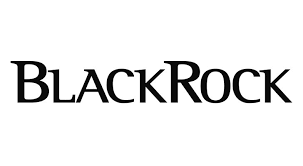贝莱德集团 (BLK.US) 2025年第二度业绩电话会
文章语言:
简
繁
EN
Share
Minutes
原文
会议摘要
BlackRock discusses its strategy to enhance portfolio performance and organic growth by integrating public and private markets, leveraging its foundational platform, successful integrations, and strong client relationships. The company reports robust financial performance, including double-digit growth in revenue, operating income, and earnings per share, driven by organic growth and strategic acquisitions. Key achievements include surpassing targets in private market fundraises and introducing innovative public-private solutions for retirees.
会议速览
This meeting was attended by several senior executives from BlackRock, including the Chairman and CEO, CFO, President, and General Counsel, to discuss the company's performance in the second quarter of 2025. The meeting highlighted the company's solid foundation in areas such as ETFs, Aladdin, total return fixed income, and cash management, as well as the business expansion in growth areas such as digital assets, active ETFs, model portfolios, and systematic solutions. Additionally, the meeting mentioned the public and private market investments and technology platforms built by the company through three significant acquisitions, and reported a 7% organic base fee growth in the past 12 months and over $650 billion in net inflows. The company has achieved four consecutive quarters of 5% or higher organic base fee growth, as well as double-digit year-over-year growth in revenue, operating profit, and earnings per share.
Blackstone Group achieved significant performance growth in the second quarter, with revenue reaching $5.4 billion, a 13% increase compared to the previous year. This was mainly attributed to organic growth, improved market performance, an increase in average assets under management, and growth in technology services and subscription revenue. Quarterly net profit and earnings per share increased by 12% and 16% respectively. Additionally, the group successfully completed the acquisition of HPS Investment Partners, adding $165 billion in client assets under management, with an expected contribution of approximately $450 million in revenue for the third quarter. The group also made significant progress in the technology and services sector, with technology revenue increasing by 26% and annual contract value growing by 32% year on year. Despite challenges from redemptions in low-fee institutional index funds, Blackstone Group still saw net inflows of $116 billion and plans to maintain profitability by controlling costs and focusing on organic growth. The group also anticipates low double-digit growth in core G&A (general and administrative) expenses by 2025.
Blackstone Group's capital management strategy primary objective is to invest in businesses to promote strategic growth or improve operational efficiency, while returning excess cash to shareholders through dividends and stock buybacks. Recently, Blackstone completed a transaction with Hps, issuing approximately 8.5 million locked-up subunits, and may issue more subunits in the next five years based on specific conditions and financial performance milestones. In addition, Blackstone repurchased $37.5 billion worth of common stock in the second quarter and plans to continue repurchasing at least the same amount in the remaining quarters. Meanwhile, Blackstone also made strategic investments, such as forming an alliance with Generation Life to develop investment solutions for Australian retirees, and planning to acquire Elmtree Funds, a real estate investment company with $7.3 billion in assets under management. In the second quarter, Blackstone Group achieved a net inflow of $68 billion, excluding outflows from low-fee institutional index assets.
Blackstone Group achieved net inflows of 116 billion in the second quarter, with 85 billion coming from ETFs, and over one-third from European clients. Fixed income led the inflows with 44 billion, while retail and institutional activities saw inflows of 20 billion and 70 billion respectively. Institutional indices saw net outflows of 48 billion, mainly due to a large redemption of 52 billion from a single client. Blackstone's cash asset management scale grew by 25% in one year, with net inflows of 22 billion in the second quarter. Through collaboration with GP prequel Hps, Blackstone has laid a foundation for future growth, demonstrating long-term growth potential in capital markets and rapid development of product channels.
Blackstone Group has long been committed to meeting the long-term needs and investment goals of a variety of customers around the world, from large asset owners to individual investors, by providing customized products and services to achieve this goal. By integrating active and passive investment strategies, especially through the acquisitions of BGI and iShares, the Group has achieved significant success over the past 15 years, with AUM growing from $300 billion to nearly $5 trillion. Building on this success, Blackstone is further expanding its business scope, integrating public and private markets to drive higher growth. In recent years, with the growing demand for digital assets, actively managed ETFs, systematic strategies, and customized SMAs, the trust and comprehensive relationships between Blackstone and its clients are driving broader opportunities.
Blackstone Group has enhanced its cooperation with top companies such as GP and HPS by strengthening its platform, thereby increasing its growth potential in the global market. The group is committed to providing integrated public and private market investment solutions, leveraging its extensive business scale and global coverage to offer comprehensive investment management, technology, and data services to clients of various sizes. Through continuous innovation and opportunities in the technology and data fields, Blackstone has achieved significant organic growth, especially in international markets such as India, the Middle East, Europe, and Asia, making significant progress. The group's global influence and diversification strategy have driven its asset management scale to reach a historic high, demonstrating strong growth momentum and future potential.
Blackstone Group recently completed the acquisition of HBS Investment Partners, which will enhance its service capabilities in the private financing sector, especially in infrastructure investment and debt financing. Blackstone Group successfully raised a flagship infrastructure strategy fund of $25.2 billion, demonstrating clients' recognition of its long-term investment strategy. In addition, Blackstone is actively expanding its investments in retirement accounts, collaborating with Great Trust Company to provide customized target date funds, and assisting clients in the Netherlands with the transition from defined benefit to defined contribution. Through partnerships with JFS and Reliance in India, Blackstone is also dedicated to introducing more Indians to the global capital markets. The acquisition of Preco will further enhance Blackstone's transparency and analytical capabilities in the private market. In the public market sector, the iShares business continues to innovate, particularly in actively managed ETFs and digital assets products, bringing significant asset and client growth to the company.
Blackstone Group emphasizes its core businesses, including ETFs, Aladdin, and cash management, as the foundation of the company's growth engine and client relationships. After the financial crisis, many companies exited the cash business, but Blackstone recognizes that all clients need to hold cash, so it sees cash management as a point of deep cooperation with clients. Its cash asset management scale is close to $1 trillion, although it is not a direct retail or DTC bank. Blackstone utilizes technological innovation, especially in digital asset technology, to access traditional financial instruments such as government bonds, with its tokenized liquidity fund reaching $30 billion in assets under management. Additionally, Blackstone has successfully partnered with CERCLA and manages over $500 billion in stablecoin cash reserves, bringing significant returns to shareholders. Through its recent acquisition of HBS, Blackstone further strengthens its comprehensive platform, aiming to provide comprehensive financial services to more individuals, companies, governments, and regions, and drive the company into a new growth phase.
Michael shared the positive impact of recent acquisition projects, especially in the progress made in cooperating with insurance clients and in the field of wealth management. He mentioned that the opportunities in the insurance and wealth management sectors in Asia and other regions have exceeded expectations, with GP 5's performance surpassing target goals, and more positive announcements expected in the coming quarters. Additionally, he also discussed the attractiveness and expansion plans in the private market and multi-strategy areas, particularly in relation to wealth and retirement channels.
Blackstone Group announced that Tomasic Coware, an authoritative investor, has joined its investment team to raise $30 billion in equity and $100 billion in debt for large project investments. The group is collaborating closely with governments and companies worldwide, including governments of Europe, the United States, and Japan, as well as large technology companies (hyperscalers), to explore huge opportunities in infrastructure and public-private financing. In addition, Blackstone Group has successfully acquired all airports in Malaysia and is progressing with a port transaction with Hutchinson. This demonstrates the wide acceptance and growth potential of Blackstone in the private credit and infrastructure investment fields after the merger with GP, in stark contrast to the 2009 BGI transaction, highlighting Blackstone's successful history in integrating different cultures, organizations, and assets.
Blackstone Group sees continued growth opportunities in their collaboration with insurance companies in the private market, especially in wealth management. With the potential changes that DeFi (decentralized finance) may bring, these opportunities will further accelerate. Blackstone has a substantial presence in retirement asset management, with 50% of the assets they manage being retirement-related. They strengthen their relationship with retirement plans through innovative products like Lifepath paycheck. Additionally, in the face of high fiduciary requirements in markets like the US, Blackstone believes that data analysis and data will be key in wealth management, creating more opportunities. By integrating public and private markets and leveraging their robust data analysis capabilities, particularly through the acquisition of Prequel Side eFront, Blackstone believes they can provide deeper services to clients, further expanding their market opportunities.
The discussion focused on the bank's plan to introduce private capital into target date funds (TDFs) and the American 401(k) channel, including strategies and timelines. The questioner mentioned recent positive developments, such as the Great Gray Win news, and the bank's preparations to launch TDFs with private capital allocations. Questions were asked about strategies, timelines, and whether the bank needs guidance or approval from the Department of Labor, the Securities and Exchange Commission (SEC), or Congress before officially launching the product.
A wealth management company emphasizes that the majority of the $12 trillion in assets they manage is related to retirement investments, and they are dedicated to building better investment portfolios for retirees. The company plans to bring the successful experience of defined contribution investment-only (DCIO) companies and private market managers into individual long-term tax-advantaged accounts, seeing potential in implementing private market disclosures in large plans. Recent dialogues with policymakers and industry association activities have brought positive momentum to the push for private market disclosure reform in the United States, and although there is still a lot of work to be done, the company remains optimistic about the prospects for reform.
BlackRock announces partnership with Great Gray to leverage its 30 years of experience in the target date fund space to build and drive a glide path for public-private hybrid target date solutions. BlackRock will provide core exposure to index equities, fixed income, and private equity, with plans to launch a proprietary lifecycle target date fund that includes private equity in 2026. By expanding the investment portfolio, it is expected to generate an additional 50 basis points of return over a 30-year period for defined contribution plans, increasing total fund amounts by 18%. Additionally, the importance of data analytics and data in reducing litigation risks and addressing defined contribution business issues is emphasized, signaling more opportunities for BlackRock in this area.
In recent discussions, BlackRock detailed its strategy for planning and achieving profit growth and cost control after completing several acquisitions. The company emphasized that although recent acquisitions led to an increase in expenses, they expect these acquisitions to be self-funding and are likely to achieve double-digit growth in free cash flow and annual recurring revenue in the future. BlackRock's goal is to continue to maintain its industry-leading profit margin of 45% or higher by balancing controlled costs with organic revenue growth. Furthermore, the company mentioned that with the completion of the integration process, they expect to better control expenses and align them with organic base cost growth, thereby further improving profitability.
Blackstone Group is expanding its fundraising activities in the private equity market through a systematic approach, especially after integrating Giip and Hps, with a clear plan for the market beyond 2025. Currently, the group is raising funds in multiple areas, including mid-market and emerging market infrastructure, investment-grade and high-yield credit, real estate debt, and more. The group has successfully closed GP5, surpassing its fundraising target of over $25 billion, and has closed over $25 billion in secondary funds. Blackstone expects its total fundraising target in the private equity market to reach $400 billion by 2030, with growth expected to accelerate between 2028 and 2030. The group emphasizes that consistency in investment performance and high quality are key to achieving fundraising goals.
The current main focus of Blackstone Group is on fully integrating its acquired companies and achieving the expected synergies, while also focusing on providing customers with a seamless integrated experience. Although acquisitions are not a necessary means to achieve its organic growth goals, the group has demonstrated the ability to achieve or exceed its organic growth goals without major acquisition activities. Recent acquisitions, such as Elmtree, are seen as strategically enhancing its strength in specific business areas. In the future, Blackstone plans to continue adopting a cautious and selective capital and financial strategy, focusing on seeking acquisition opportunities that complement the private equity market and technology sectors. Additionally, Blackstone is also looking to expand in global capital markets, particularly in helping developing countries establish and expand their capital markets, such as projects in India and Saudi Arabia, which are seen as the main drivers of development in the next five years. While remaining open to attractive acquisition opportunities, especially complementary acquisitions in the private equity market and technology sectors, the group is more looking forward to achieving future success through organic growth as the global capital markets develop.
The discussion focused on the company's capital management strategies, including investing in the business, returning cash to shareholders through dividends and stock buybacks. The company plans to repurchase at least $1.5 billion of stocks in 2025 and maintain a dividend payout ratio of 40% to 50%, with an expected dividend growth rate in the high single digits to low double digits over the next five years. In addition, the discussion also involved how to adjust non-cash amortization to avoid impact on the dividend ratio.
The discussion focused on the strong organic growth of iShares in the European fixed income ETF market, as well as long-term development strategies, especially with the expansion of the European retail investor base and the alternative role of fixed income securities in iShares ETPs. It emphasized iShares' leading position in global ETF flows and the industry's most diverse offerings, particularly in the growth of fixed income, active management, digital assets, and European-listed products.
Martin mentioned that fund ETFs are leading the way in investments, with the European market showing enormous growth potential, despite being 5 to 6 years behind the United States in terms of development. As the acceptance of ETFs in the European market gradually increases, especially with the transition from fixed income to fixed contribution and the widespread use of digital platforms, it is expected that Europe will experience a high growth period similar to the past five years in the United States. At the same time, iShares has $1 trillion in assets under management in Europe, with a market share of 20%, demonstrating strong competitive advantages and future growth opportunities in the European market.
Blackstone Group, in its communication with central banks and regulatory agencies, has noticed the rise of stablecoins and their potential role in diversified U.S. dollar assets. With the advancement of digital currencies, the tokenization of stablecoins and financial assets is considered to be a future trend. Blackstone Group emphasizes that in order to ensure the legality and safety of stablecoins, they should be invested in short-term government bonds. In addition, central banks are considering using digital currency or stablecoins to promote the digitization of their national currencies, which will provide the Blackstone Group with the opportunity to participate in global currency policy making and manage related assets.
During the telephone conference, BlackRock presented its strong performance in the second quarter, emphasizing the firm's solid global relationships and the platform's role in driving future investment portfolios. The company expressed its expectations for the newly joined Hbs team, as well as its commitment to better meeting customer needs, which will bring stronger and more sustainable returns for shareholders. The conference ended with thanks and blessings to the participants.
要点回答
Q:What was the primary focus of the financial performance and business results review?
A:The primary focus of the financial performance and business results review was on the as adjusted results of BlackRock for the second quarter of 2025.
Q:What was the growth in organic base fee revenue for the second quarter and over the last 12 months?
A:The growth in organic base fee revenue for the second quarter was 6%, marking the fourth consecutive quarter of 5% or higher organic base fee growth. Over the last 12 months, BlackRock experienced 7% organic base fee growth and over 650 billion net inflows.
Q:What were the final figures for Total AUM and revenue for the second quarter?
A:The final figures for the second quarter were a record AUM of $12.5 trillion and a 13% year-over-year increase in revenue to $5.4 billion, with a 12% increase in operating income to $2.1 billion and earnings per share of $12.5.
Q:What was the impact of the HPS Investment Partners acquisition on BlackRock's financials?
A:The impact of the HPS Investment Partners acquisition on BlackRock's financials was a significant milestone towards achieving 30% revenue contribution from private markets and technology by 2032. It added $165 billion of client AUM and $118 billion of fully distributed AUM on July 1, and is expected to add approximately $450 million of revenue, including $225 million in management fees, in the third quarter of 2025, and positively impact BlackRock's overall effective fee rate by approximately six tenths of a basis point.
Q:What was the quarterly base fee revenue growth, and what factors contributed to it?
A:The quarterly base fee revenue growth was 15% year over year, driven by the positive impact of market beta on average AUM base fees, organic base fee growth, and approximately $240 million in base fees from GPs on an equivalent day count basis.
Q:What were the effects of the HPS acquisition on BlackRock's expenses and compensation ratio?
A:The effects of the HPS acquisition on BlackRock's expenses and compensation ratio included an estimated base fee run rate approximately 5% higher than the total base fees for the second quarter, and a modestly higher adjusted compensation to net revenue ratio due to compensation associated with performance-related revenues from HPS.
Q:What was the percentage change in technology services revenue and subscription revenue from the prior year?
A:Technology services revenue and subscription revenue grew 26% compared to the prior year, reflecting sustained demand for BlackRock's Aladdin technology offerings and the impact of the preprint transaction which closed on March 1st.
Q:What were the changes in G&A expenses and sales, asset and account expenses, and what were the reasons for the changes?
A:G&A expenses increased 16% primarily driven by the GPs and HPS acquisitions and higher technology spend. Sales, asset and account expense rose 14% due to higher direct fund expense and distribution costs, with direct fund expense up 23% year over year, mainly due to higher average ETF AUM and net inflows.
Q:How is BlackRock's capital management strategy structured, and what investments are planned?
A:BlackRock's capital management strategy involves investing in the business to scale strategic growth initiatives or drive operational efficiency, and then returning excess cash to shareholders through dividends and share repurchases. Inorganic investments may be made for accelerating growth and supporting strategic initiatives. BlackRock also issued and delivered subordinates to be settled in common stock and restricted stock units for HPS employees. They aim to repurchase at least $1 billion of shares per quarter for the remainder of the year, following the HPS transaction.
Q:What were the net inflows figures for BlackRock, excluding low fee institutional index outflows?
A:BlackRock's net inflows, excluding low fee institutional index outflows, were $68 billion. ETF net inflows were $85 billion, and total AUM from the HPS acquisition was $283 billion.
Q:What are the strategies BlackRock employs to serve the unique long-term needs and aspirations of its clients?
A:BlackRock serves its clients by designing and delivering investment strategies and products that fit their unique long-term needs and aspirations. They cater to clients through various means, including whole portfolio solutions, opportunistic investments, and customized models and Smas.
Q:How has BlackRock's history of anticipating future client needs contributed to its growth?
A:BlackRock's history of anticipating future client needs has contributed to its growth by powering sustained multicity growth through its whole portfolio approach. This strategy was highlighted by the acquisition and integration of BGI and iShares, which propelled the company to success over the next 15 years.
Q:What significance did the acquisition of BGI and iShares hold for BlackRock's growth?
A:The acquisition of BGI and iShares was significant for BlackRock's growth as it was the first time the company blended active and index investing at scale. This integration led to substantial success for clients and shareholders, with iShares' Aum growing from $300 billion to nearly $5 trillion after the acquisition.
Q:How is BlackRock redeploying its foundational platform to drive further growth?
A:BlackRock is redeploying its foundational platform to drive further growth by bringing together public and private markets across both asset management and technology. This approach has powered performance for clients and sustained organic base growth through cycles and is expected to drive even higher growth in the future.
Q:Which new capabilities are driving secular demand for BlackRock's services?
A:Secular demand for BlackRock's services is being driven by new capabilities such as digital assets, active ETFs, systematic strategies, and customized Smas through imperiale and spider walk.
Q:How is the addition of Hbs Investment Partners expected to benefit BlackRock's franchise?
A:The addition of Hbs Investment Partners is expected to benefit BlackRock's franchise by allowing the firm to serve investors and borrowers across all private financing needs. This is anticipated to result in immense growth for the combined franchise.
Q:What is the impact of BlackRock's integrated approach on client engagement?
A:The impact of BlackRock's integrated approach on client engagement is positive, as it contributes to a robust client engagement experience rather than a pause, contrary to what is common in the private markets firm industry. Clients are eager to invest more capital with BlackRock due to their reputation as long-term investors and partners.
Q:What was the outcome of the final close of Gp's flagship infrastructure strategy?
A:The outcome of the final close of Gp's flagship infrastructure strategy was a major milestone for BlackRock, raising $25.2 billion, which surpassed its target and represented the largest client capital raise in a private infrastructure fund. This milestone also indicated that fundraising was not dampened by a change in ownership, but rather enhanced it.
Q:How is BlackRock positioned to assist with retirement planning and demographic shifts?
A:BlackRock is positioned to assist with retirement planning and demographic shifts by advising clients, governments, and policymakers on how to help constituents achieve a more secure future and retire with dignity. With the transition from defined benefits to hybrid defined contribution forms in the Netherlands and similar changes globally, BlackRock is working with clients to manage this transition and improve investment outcomes for plan members.
Q:What is BlackRock's approach to being both local and global in its operations?
A:BlackRock's approach to being both local and global is to deploy capital in public and private markets in every country it operates in, powered by a global platform. The firm consistently studies capital flow drivers within each country and region to execute at scale locally. It aims to bring a global framework to India through its Geo BlackRock offering in partnership with JFS and Reliance, among others.
Q:How is the acquisition of CoStar expected to benefit BlackRock's private market operations?
A:The acquisition of CoStar is expected to benefit BlackRock's private market operations by providing better analytics, standardized benchmarks, and more widely available performance data. This will close the information gap in private markets and enable future growth.
Q:What role do BlackRock's core businesses play in the firm's growth?
A:BlackRock's core businesses, such as ETFs, Aladdin, and cash management, play a critical role in the firm's growth by being a growth engine and a cornerstone of many client relationships. These businesses have contributed significantly to the firm's overall success, with cash management being an initial entry point for many clients.
Q:How is BlackRock continuing to innovate in the cash management space?
A:BlackRock is continuing to innovate in the cash management space by using technology such as digital assets to access traditional instruments like treasuries. This approach is exemplified by the tokenized liquidity fund with $3 billion in Aum and the management of more than $50 billion for Circle stable coin cash reserves.
Q:What is the significance of BlackRock's recent acquisitions in terms of client engagement and growth?
A:The significance of BlackRock's recent acquisitions, such as Hbs Investment Partners and CoStar, in terms of client engagement and growth is that they will enhance the firm's ability to offer more to clients, align cultures, and deliver the full range of BlackRock capabilities to more individuals, companies, governments, and regions. The integration of these entities is expected to improve the client experience and drive future growth.
Q:What progress is being made in bringing HPS and GP together with BlackRock, and what are the outcomes in terms of client feedback and new mandate wins?
A:The progress in bringing HPS and GP together with BlackRock is strong, with positive client feedback and opportunities stronger than anticipated. Specific outcomes include working with insurance companies and wealth management across regions, and new mandate wins or expanded relationships with insurance clients. Positive announcements related to AIP funds are expected in the coming quarters.
Q:What recent additions to the investment team and equity and debt fundraising plans indicate about BlackRock's growth opportunities?
A:Recent additions to the investment team include Tamas Coware Investment Authority, and BlackRock plans to raise $30 billion in equity and an additional $100 billion in associated debt. These plans, alongside discussions with hyperscalers, indicate substantial growth opportunities, particularly in public-private financing and infrastructure financing.
Q:How is the combination of HPS GI and BlackRock being received by clients, and what are the potential implications of rising deficits for public private financing?
A:The combination of HPS GI and BlackRock is being very well received by clients, with resiliency in conversations about private credit. Rising deficits are expected to increase the role of public-private financing and infrastructure financing, opening up large opportunities for BlackRock.
Q:What are the opportunities in private markets with insurance companies, and how is the integration with insurance AUM contributing to BlackRock's growth?
A:Insurance companies' AUM with BlackRock is contributing to growth, as the firm manages $700 billion and continues to see more opportunities for private market engagement. The acquisition of Prequel further expands BlackRock's capabilities in private markets.
Q:How is BlackRock positioned in the retirement space, and what role does analytics and data play in this area?
A:BlackRock is well positioned in the retirement space with 50% of its managed assets in retirement, strong client relationships, and successful products like life path. The need for analytics and data is expected to grow significantly, especially with respect to fiduciary responsibility and further growth opportunities.
Q:What strategy is BlackRock pursuing regarding the migration of private assets into target date funds through the 404(k) channel, and what regulatory developments are needed?
A:BlackRock plans to migrate private assets into target date funds through the 404(k) channel, as indicated by recent wins and announcements with partners like Great Gray. Regulatory developments such as advice reform or litigation reform are needed to include private market disclosure in DC plans. Positive momentum is building, and BlackRock is working on products to launch a proprietary life path with private target date fund in 2026.
Q:How does BlackRock view the importance of broadening investment profiles in defined contribution plans and the role of analytics and data in this process?
A:BlackRock believes broadening the investment profile in defined contribution plans, such as adding private market allocations, can lead to significant returns over time. The firm emphasizes the importance of analytics and data to manage the additional complexity and mitigate risks associated with these investments.
Q:What are the expected growth figures for 2025 core GA and what drives the profitable growth?
A:The expected growth for 2025 core GA is a low teens percentage increase, primarily driven by the onboarding of three acquisitions. The company aims to align organic revenue growth with controllable expenses, which include compensation and benefits, as well as GNA.
Q:How will the recent acquisitions impact controllable expenses and organic revenue growth?
A:Recent acquisitions are impacting controllable expenses by causing expense consolidation, which colors the comparisons. However, the company expects that as the period of consolidation in the back half of the year passes, controlled expenses will continue to be in line with organic base fee growth, as delivered since the introduction of the framework in 2023 and over the last 12 months.
Q:What is the projected growth in fundraising for the remainder of the year and the coming years?
A:BlackRock is aiming to scale private market fundraising through a systematic approach to clients, with a robust and exciting roadmap for the coming years, including the next vintage of several strategies and thematic products. They have ongoing fundraising across various asset classes and have closed significant funds like GP 5 and a secondary and liquidity strategy. The goal is to reach $400 billion in gross private markets fundraising from 2025 through 2030, with more of a ramp-up to higher fundraising levels in later years, specifically 2028 through 2030.
Q:How does BlackRock view inorganic opportunities and M&A in the context of its current strategy?
A:BlackRock's main focus right now is fully integrating recent acquisitions and realizing planned synergies. They do not need M&A to meet or exceed organic growth targets and have been able to do so before and now, running on trailing 12 months of 7% organic growth. They are being prudent, selective, and tactical with capital and financial position in considering M&A. They have made several smaller tactical acquisitions to bolster business areas and are excited about planned acquisitions like the one of Elmtree. They are looking at opportunities to expand capabilities in private markets and technology and see potential for growth in emerging markets as countries build out their capital markets.
Q:What is the strategic vision for expanding global capital markets and BlackRock's role in it?
A:BlackRock sees global capital markets expanding as countries like India and the Middle East seek to build out their own systems. They believe that these developments are primary drivers of future success for BlackRock over the next five years. They are looking to work with more governments worldwide, helping them expand their capital markets and build asset management platforms, exemplified by their work with Reliance and Geo Black Block in India and their efforts in the Middle East regarding mortgage-backed securities. They are also excited about organic growth opportunities as the capital markets grow worldwide over the next five years.
Q:How does BlackRock plan to manage capital returns and shareholder payouts?
A:BlackRock's capital management strategy is to invest first in the business and then return cash to shareholders through dividends and share repurchases. They have executed share repurchases as an output of their strategy, having repurchased $375 million worth in the second quarter and expecting to purchase at least $1.5 billion worth of shares for the full year 2025, subject to market and other conditions.
Q:What is the impact of noncash amortization of acquisition-related intangibles on dividend payouts?
A:The company mentions adjusting the noncash amortization of acquisition-related intangibles to calibrate its dividend payouts to the payout ratio.
Q:How is the company performing in the fixed income iShares market in Europe?
A:The company has been experiencing strong organic growth in the fixed income iShares franchise in Europe, with a primary role as a market to be involved in. iShares has become the vehicle of choice for global ETF flows, leading in market share and offering the most diversified product line-up. This has been reflected in organic revenue and net inflows, with 38 iShares products recording over 1 billion of net inflows in the quarter.
Q:What is the potential growth for ETFs in Europe and what areas are driving growth?
A:The potential growth for ETFs in Europe is seen as strong, especially as Europe democratizes its retail investor base. The company anticipates more use of ETFs across Europe, not just on the equity side but also on the fixed income side. Growth is being driven by areas like fixed income, digital assets, and European-listed A-S. The company is well positioned to capture this growth, similar to the growth rates seen in the U.S. over the past five years.
Q:How is the European market for ETFs evolving and what role is iShares playing?
A:The European market for ETFs is evolving with increasing regulation focused on access to ETFs, which is just beginning in Europe and is 5-6 years behind the U.S. iShares has a 20% market share in Europe and is benefiting from the shift from defined benefit to defined contribution pension schemes. The company is confident that Europe will launch growth rates similar to those seen in the U.S. in terms of ETF adaptation, especially with the interest in digital ETFs.
Q:What is BlackRock's view on stablecoins and their role in the financial system?
A:BlackRock sees a vibrant conversation about stablecoins with central banks and regulators and believes there will be a growing role for competitive stablecoins that are backed by short-term government bonds. They advocate for stablecoins to be substitutes for currency and to be legitimized, safe, and well-collateralized. BlackRock is well positioned to participate in the development of stablecoins and is expecting to play a significant role as they become integrated into the financial system.

Blackrock, Inc.
Follow





